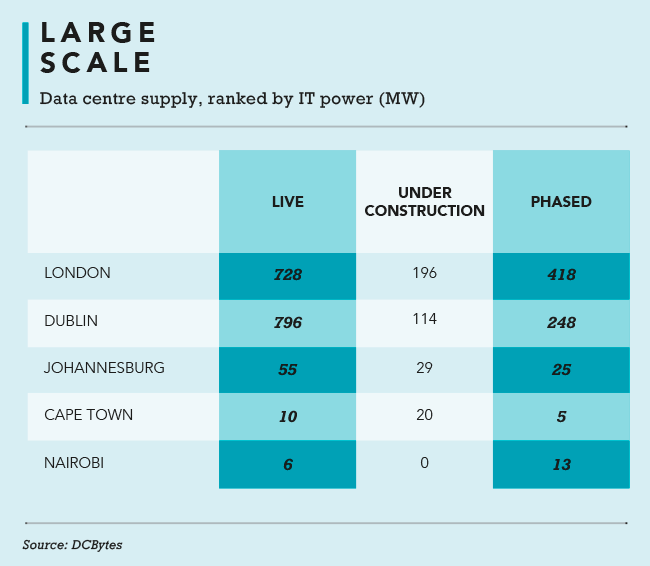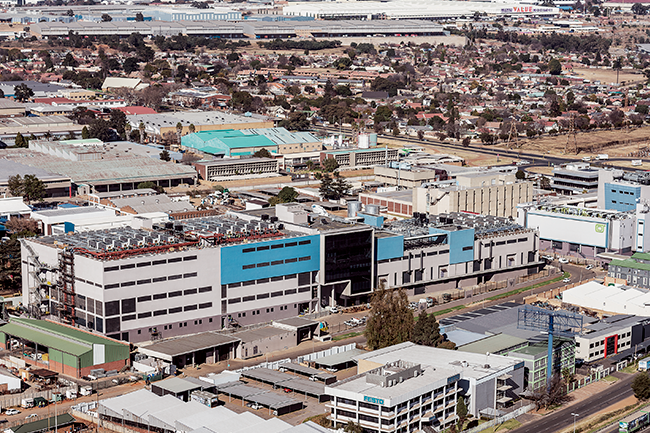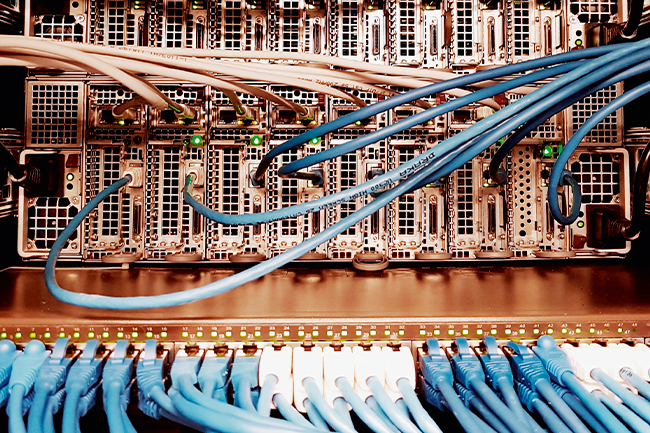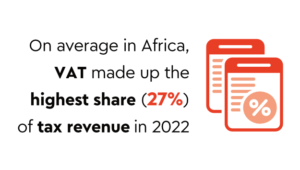For the day-to-day services on which we heavily rely, to keep our computers, energy systems, transport systems, health services and critical telecoms online, it’s no exaggeration to say that data centres have become crucial for modern living. Rapidly, we are building and commissioning more of these, and the past decade has seen an unparalleled increase in the number of data centres worldwide.
Data centres are not only growing in number and size, but they’re evolving too, many of them now huge, hyperscale centres for cloud-based technology and colocation services. The downside, however, is that data centres are greedy guzzlers of energy, adding substantial loads to existing electricity infrastructure and, in some countries, putting significant strain on the national electricity grid. The answer to this lies in the exploitation of renewable energy as a power source.
Between 2010 and 2017, the average cost of producing solar energy fell by 73%, and by 22% for onshore wind power, says the International Renewable Energy Agency. And, according to research entity Knight Frank, the ‘unfolding revolution in Africa’s market for renewable energy is set to create new opportunities’. Knight Frank notes that renewable energy will drive growth and ensure accessibility in even the most remote African regions, simultaneously allowing cloud-computing powerhouses to hit their sustainability targets.
Despite being home to 17.5% of the world’s population, the continent has just 1% of the world’s data centres. Data-centre capacity in Africa is currently around 200 MW, although the African Data Centres Association (ADCA) estimates that the future need will be closer to 1 000 MW – five times more. Currently, more than two-thirds of its capacity sits across South Africa, Kenya, Nigeria, Egypt and Morocco.

Stephane Duproz, CEO of Africa Data Centres (ADC), says the data-centre market is exploding and that Africa is catching up. Until recently, the continent did not have the infrastructure and decades of experience in operating data centres, he says, something that ADC seeks to change by investing heavily into bringing pan-African, carrier-neutral facilities to the continent. ADC currently operates nine data centres across Africa, including three in South Africa – two in Johannesburg and one in Cape Town.
Data centres are ‘at the heart of economic growth in Africa’, says Duproz, and without them, developing rich and self-sufficient ICT ecosystems cannot happen. ‘These facilities are the lifeblood of every business and the foundation of the internet itself, with thousands of networks and connections meeting [at] their data centres, providing wide-ranging digital ecosystems for cloud, content, security, storage and financial services.’
Taking its environmental impact seriously, ADC has begun installing solar power across its centres. A new, 10 MW data centre being built in Lagos, Nigeria, which will form the firm’s West African hub, also has sustainability top of mind. The company designed its latest data centre in line with environmental best practice, using grey or non-potable water for cooling, and utilising solar energy to offset its reliance on the grid. ‘Digitalising the continent at the cost of the environment is not a sacrifice Africa Data Centres is prepared to entertain,’ says Duproz. Keeping African data on African soil is another key consideration driving the demand for local data centre facilities. ‘We are proud to be ensuring that African data stays in Africa,’ he says.
The company recently announced plans to build large, hyperscale data centres across 10 countries, including South Africa, Egypt, Morocco and Tunisia, over the next two years – an investment worth about US$500 million. The expansion will more than double ADC’s African footprint. ‘This commitment to Africa, through the continuous deployment of capital-intensive infrastructure projects, has pivotal knock-on effects for the communities and economies we serve,’ says Duproz. ‘All our data centres are world-class – built to the same, global market-leading standard and offer a reliable, resilient, secure and interconnected base.’
Highlighting the company’s commitment to sustainable, clean builds, Duproz says ‘we invest heavily in innovative greywater systems, waste disposal and renewable-energy sources, ensuring our carbon footprint is drastically reduced, our reliability is uncontested and that while building economies, we’re aiding the environment’.
Earlier this year Amazon became the world’s largest corporate purchaser of renewable energy. Its total renewable-energy investments to date offer 6.5 GW of electricity production capacity – some 18 million MWh of renewable energy annually. The addition of 26 new utility-scale wind and solar projects around the world, including in South Africa, Australia, France, Germany, Italy, Sweden, the UK and the US, boosted the company’s renewable energy projects to 127. The projects support Amazon’s goal of reaching net zero carbon emissions across its business by 2040, part of which includes powering its infrastructure with 100% renewable energy – a target the company looks set to already reach by 2025.

In April 2020, Amazon Web Services (AWS) announced the opening of the AWS Africa (Cape Town) region, its first facility in South Africa, also stating that a solar PV farm in the Northern Cape would be used to power the premises with renewable energy. The project, which will supply 28 GWh of solar power each year, is being led by solar-energy experts the SOLA Group, which will be responsible for developing the plant, and which will also build, own and operate the 10 MW solar facility. The solar energy produced by the farm will be ‘wheeled’ via Eskom’s grid to Amazon’s facilities.
Wheeling enables energy that has been generated from projects in outlying areas, such as on a solar farm, to urban areas, undertaken through the transfer of electrical power using a utility’s transmission or distribution system (in this case Eskom) between different grid or network service areas. The project has received a generation licence from the National Energy Regulator of South Africa (Nersa) – something that similar projects have had difficulty achieving.
‘Environmental and efficiency sustainability is the future of data centres on the continent, keeping up with EU and US trends,’ says Brendan Dysel, who heads infrastructure management at Teraco, Africa’s most interconnected data centre hub, with more than 18 500 cross-connects. Dysel argues that South Africa is well behind international trends when it comes to renewable energy, saying ‘this is one area that will remain a challenge’.
Teraco recently completed work on its JB3 data-centre facility, located within the Isando campus in Ekurhuleni, east of Johannesburg. The multi-billion-rand facility comprises 45 000 m2 of building structure, 12 000 m2 of data hall space, and 29 MW of critical power load. When combined with the existing Isando campus facilities, the critical power load totals 40 MW across the campus data-centre footprint. Teraco has completed several renewable-energy initiatives by installing solar PV plants on some of its facilities to support its offices and general building load. Dysel believes that Teraco facilities push the envelope with the use of best-practice methodologies. ‘The roadmap for future Teraco data centres is driven by the market demand,’ he says. ‘The demand will require additional facilities in the near future, which will drive further efficiency drives on the design to ensure operational sustainability.’
Asked about the energy requirements of its data centres, Dysel says that in a colocation environment, the key contributor to energy consumption, other than the IT load itself, is the mechanical load. ‘The mechanical operating conditions plus design and continuous monitoring of the system is key,’ he says. ‘In operational facilities, monitoring the environmental conditions at rack level, and having systems in place to automatically react to ensure that no area of the facility is over cooled, is key to reduce the energy consumption and minimise losses.’ Fundamental designs look at the life cycle of the proposed equipment and use the ambient conditions and natural resources available to reduce operating costs, albeit in an environmentally sustainable manner, he adds.
The impact of South Africa’s load-shedding occurrences is currently not too severe for Teraco, according to Dysel. He notes, however, that back-up plans are absolutely essential. ‘Emergency operating plans, back-to-back fuel agreements with multiple fuel suppliers, and support contracts with mission-critical suppliers is paramount for when issues with resilient systems occur. The key is to trust the designs, rely on your resilient systems and site team preparedness when issues arise.’
Dysel says that while Teraco is constantly looking at ways to make its usage of power more efficient and sustainable, the technology available and the regulated power production space is not yet conducive for the company to make a concerted investment. ‘With Nersa changing the rules around independent power producer licences, this will present different opportunities in time, which Teraco will certainly monitor.’
















